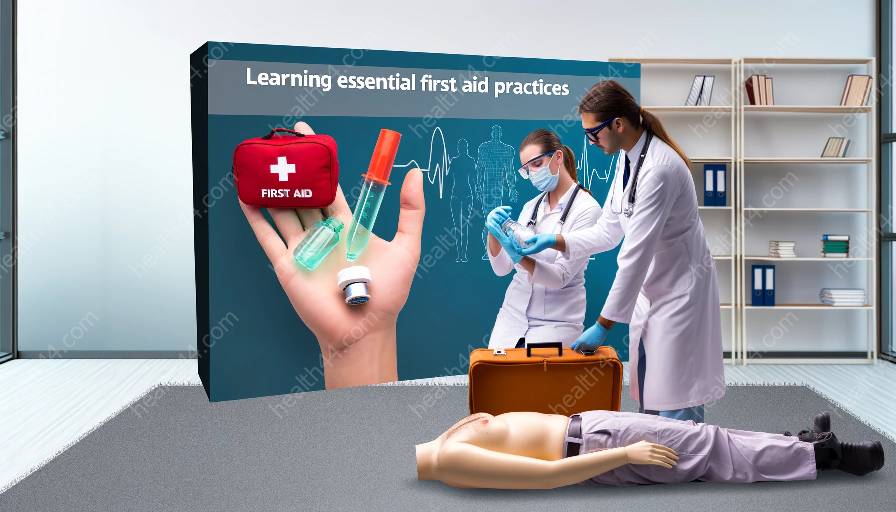First aid is the initial care given to someone who has been injured or is suddenly taken ill. It is important to know some basic first aid procedures to provide immediate assistance before professional help arrives. This topic cluster offers comprehensive information on essential first aid skills and techniques that are compatible with health education, medical training, and first aid practice.
First Aid Training and Education
First aid is an essential skill that anyone can learn. Whether you want to be prepared for emergencies at home, work, or in the community, having a good understanding of basic first aid procedures can save lives. Health education and medical training programs often include first aid certification courses to equip individuals with the knowledge and skills to respond effectively in emergency situations.
Understanding the Importance of First Aid
First aid plays a crucial role in providing immediate care for injuries, illnesses, and medical emergencies. It helps stabilize the patient and prevent the condition from worsening while awaiting professional medical assistance. By learning basic first aid procedures, individuals can contribute to creating safer environments and making a positive impact on public health.
Key Components of Basic First Aid
Assessment and Response
When providing first aid, it is important to quickly assess the situation and ensure the safety of both the injured person and yourself. This involves checking for any potential hazards and identifying the nature and severity of the injury or illness. Assessing the person's level of consciousness, breathing, and circulation is critical in determining the appropriate course of action.
Basic Life Support (BLS)
Basic life support techniques, including cardiopulmonary resuscitation (CPR), are fundamental skills in first aid. Knowing how to perform CPR and use an automated external defibrillator (AED) can significantly increase the chances of survival for someone experiencing cardiac arrest. Proper training in BLS is crucial for effectively responding to life-threatening emergencies.
Wound Care and Bleeding Control
Understanding how to clean and dress wounds, as well as control bleeding, is vital in providing basic first aid. Proper wound care helps prevent infection and promotes the healing process, while applying direct pressure and using appropriate bandages or tourniquets can help control bleeding and minimize blood loss.
Managing Choking and Airway Obstruction
Choking is a life-threatening emergency that requires immediate intervention. Recognizing the signs of choking and knowing how to perform abdominal thrusts (Heimlich maneuver) can save a person's life by clearing their airway obstruction. Basic first aid procedures for managing choking are essential skills that can be learned through training and practice.
Applying First Aid in Different Situations
First Aid for Trauma and Injuries
Accidents and injuries can occur in various settings, such as at home, on the road, or during recreational activities. First aid techniques for managing fractures, burns, head injuries, and other trauma-related conditions are essential for providing immediate care and preventing further harm until professional medical help is available.
Medical Emergencies and Illnesses
Recognizing the symptoms of common medical emergencies, such as heart attacks, strokes, seizures, and allergic reactions, is crucial for prompt intervention. Basic first aid procedures for assessing and managing different medical conditions can make a significant difference in improving outcomes and reducing the impact of the illness or injury.
Conclusion
Basic first aid procedures are an integral part of health education, medical training, and emergency preparedness. By acquiring essential first aid skills and knowledge, individuals can become valuable assets in providing immediate assistance and improving the outcomes of medical emergencies. From basic wound care to life-saving interventions, being well-versed in first aid enhances personal and community resilience, ultimately contributing to a safer and healthier society.



